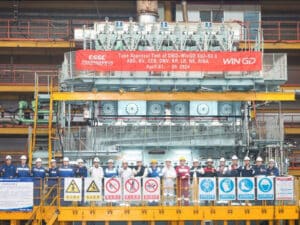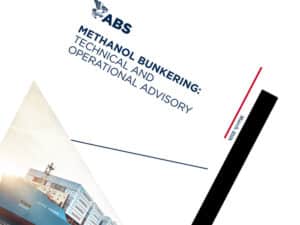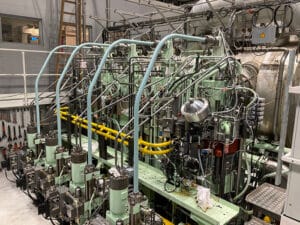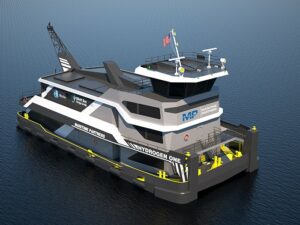
Op-Ed: The rise of renewable diesel in maritime
Written by Heather Ervin
Carrie Song
By Carrie Song, Vice President, Neste US
Ports are important for the U.S. economy, but it’s no secret that port-related emissions from fossil fuel use impact public health and the climate. As the world grapples with the effects of climate change, the marine industry must incorporate ways to reduce greenhouse gas emissions. Each sector within transportation has the responsibility to create a healthier planet for our children and future generations to come.
Thankfully, there is a simple “today” solution. As people demand climate action and governments progress policies, renewable diesel must play a role. The best part is that renewable diesel is powered with significantly lower greenhouse gas emissions—which helps fleets make substantial progress toward their emission reduction targets.
The big difference between renewable diesel and fossil fuel is that renewable diesel is made from renewable raw materials, such as used cooking oil. Since renewable diesel has a similar chemical composition to fossil diesel, it can be used as a drop-in solution in all diesel-powered vessels without investments into new fleets, modifications to the engines or the fuel distribution infrastructure.
Seeing the potential, companies like PTL Marine in California, are at the forefront of reducing emissions in the marine industry. PTL Marine is working to ensure the state’s marine industry has easier access to renewable diesel by offering various delivery modes – truck to the vessel, dockside services, and barge to the vessel.
One success story of a marine company making the switch to renewable diesel is Hornblower in partnership with Diesel Direct. As the sole concessionaire for passenger service city cruises between San Francisco, Calif., and Alcatraz Island for decades, Hornblower is in service year-round. The Bay Area’s iconic waterfront and bustling maritime activity has long been a hub of commerce and tourism, and Hornblower was in search of a way to reduce the use of fossil fuels and achieve its sustainability goals, while decreasing visible and unsightly ship emissions. Since making the switch, Hornblower is now using an average of 20,000 gallons of renewable diesel a month.
[Editor’s Note: Song presented on renewable diesel at Marine Log’s FERRIES conference last November. You can read about that here.]
At the same time, governments are incentivizing the use of renewable energy to mitigate climate change. This is reflected in the supportive policies and regulatory frameworks being implemented. For example, California’s Commercial Harbor Craft (CHC) regulation, established by the California Air Resources Board (CARB), requires commercial harbor craft vessels in the state to use renewable diesel instead of ultra-low sulfur diesel (ULSD), to limit emissions such as particulate matter and nitrogen oxides for vessels operating in the state’s ports and near the coast. The regulation applies to the use of on-water diesel fuels in California harbors, ports, navigable waterways, marinas and marine navigation districts.
In fact, research by CARB found that renewable diesel, when compared with fossil diesel, can provide up to a 26.6% reduction in fine particulate emissions and up to 11.8% reduction in the emissions of nitrogen oxides (NOx) in harbor crafts equipped with a Tier 2 marine-certified engine. It also delivers strong performance and meets all of the CARB requirements, including a flash point of 140ºF or greater.
The adoption of renewable diesel in the maritime industry signifies a step forward in the pursuit of a cleaner and more sustainable future. As the world continues its journey to combat climate change, renewable diesel is leading the way toward a better tomorrow on the seas and beyond.




